In fact it wasn’t even number 2.
There was a lot of rad gear at Outdoor Retailer 2018 Winter Market, but the buzz across the trade show floor was about more than gear. Two topics dominated conversations at OR this season and they were:
1. Women and Leadership in the Outdoors
2. Conservation, Sustainability, Activism
Let’s explore how these issues made their mark on January’s OR Show and why they are so important, not just right now, but in shaping the future of the outdoor industry.
Women and Leadership in the Outdoors
A hot topic, of course, and no surprise that conversations around gender equity took center stage at OR. As the #MeToo movement continues to snowball with momentum, some industries, tech for one, seem turned upside down and are struggling to evolve and adapt. The outdoor industry, thankfully, is not one of those.
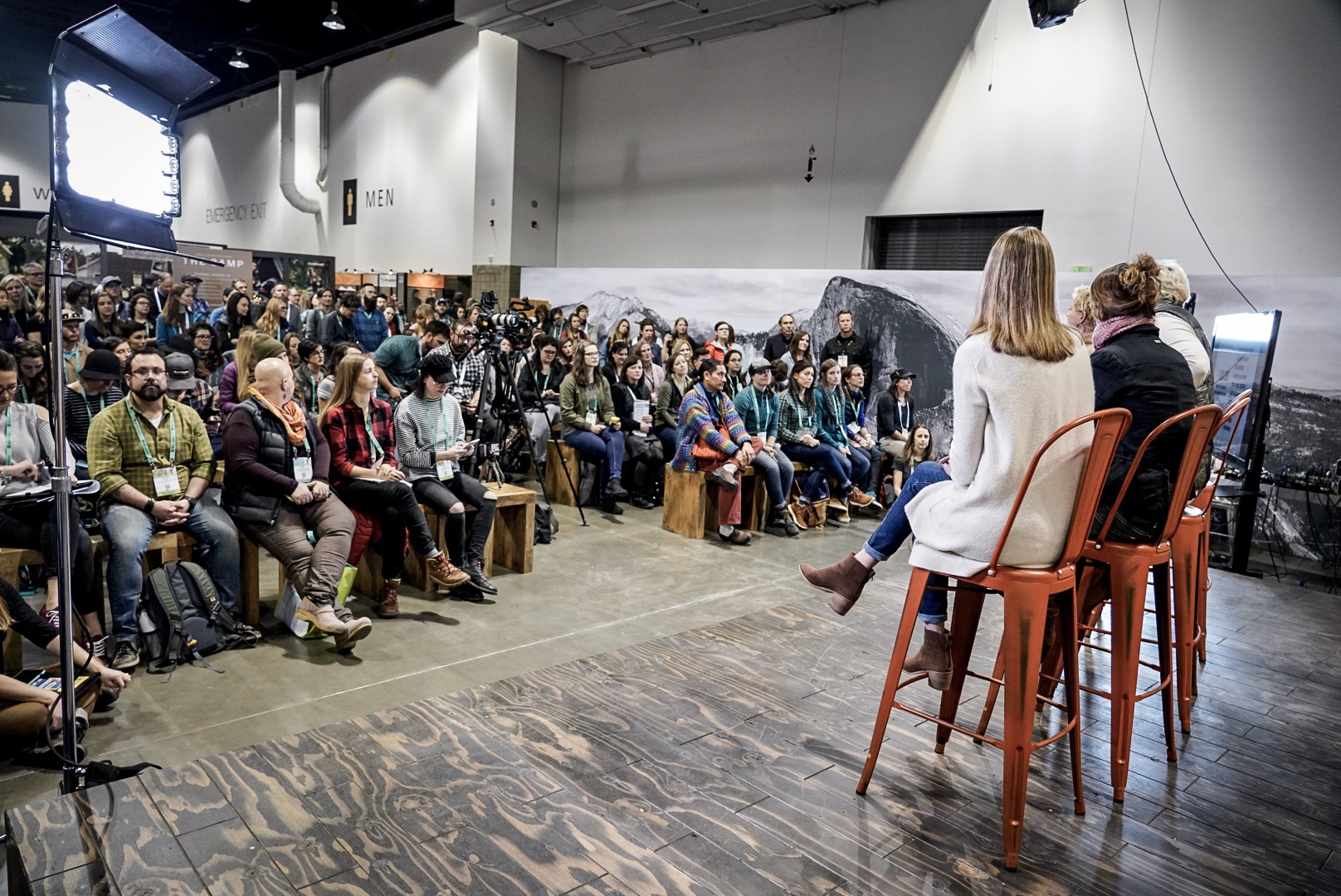
Women currently make up over 50% of consumers in the outdoors, and thanks to organizations like Camber Outdoors, Women Outdoors, Women’s Wilderness, the Outdoor Women’s Alliance, and Girls Athletic Leadership Schools, we see the outdoor industry setting an exciting precedent and looking to see women in 51% of leadership roles within 5 years.
Since 2015, more than 75 outdoor company executives have committed to attract, retain and advance more women as a cornerstone business strategy, including bosses from Burton, W.L. Gore, CamelBak, Specialized, SRAM, Patagonia, REI and Arc’teryx. – Denver Post
Over the past year, REI has certainly established themselves a leader in their efforts to highlight and empower the women of the outdoors.
Their Force Of Nature campaign put women front and center throughout the year and celebrated female athletes and adventurers, CEO’s and entrepreneurs, trailblazers and rule breakers, telling stories and putting on classes, events, and even women’s only adventures nationwide.
And yes, while we can celebrate the progress being made and the fact that our industry is leading the charge and creating a blueprint for how businesses across verticals should be aiming to operate, the work is far from over.
The reason for all of these features, campaigns, classes, and conversations, is that there is a problem.
REI’s National Study on Women and the Outdoors is now a year old but still sets the stage pretty well for the current challenges women face in the outdoor space.
Only recently have we seen this paradigm shift toward celebrating the outdoor woman. Historically and until recently, the outdoors were a man’s world.
Women stayed at home with the family and it was the men who went off adventuring around the world, climbing the highest mountains, sailing uncharted waters, and pushing through seemingly impenetrable jungles. That was just the way it was, and unfortunately, that thinking has perpetuated through the years and into the persona of the industry built around outdoor pursuits.
Some though, went against the grain and made their mark, proving that women could definitely hang in outdoor exploration. Amelia Earhart. Bobby Gibb. Lynn Hill. Pasang Lhamu Sherpa. And the 1970’s Annapurna women’s team.
And now, everything is changing. Female adventurers are no longer the outliers. In fact, there are over 160 million female adventure travelers out there. (Looks like my friend Kate who runs Camera & Carabiners’ Beacons of Badassery has a lot more women to profile!)
In the past, outdoor gear either wasn’t made specifically for women, or if it was, it was terrible. Marketing was missing the mark, not realizing that “shrink it and pink it” was not the solution. Walking the Outdoor Retailer show floor last week, it’s clear that the woman’s voice is finally being heard.
The gear, the acceptance, the opportunity, it’s all either here, or on the way. It’s about time.



Conservation, Sustainability, Activism
The other major issue on every person and brand’s tongue at OR this season was, surprise, public lands and our duty to fight to protect them.
This was to be expected considering the reason Outdoor Retailer moved to Denver was that outdoor brands took a stand against Utah’s decision not to stand for protecting Bears Ears and Grand Staircase-Escalante National Monuments.
So how did this issue play out at OR? Bigly.
Things really kicked off the night before the trade show opened to the public when Patagonia joined with Conservation Lands Foundation, The Wilderness Society, and Center for American Progress to project a countdown clock on the Bureau of Land Management headquarters in Lakewood, Colorado in protest of President Trump’s sell-out of national monuments and the February 2 deadline when mining and drilling interests could start staking claims on the land.

Walking the show floor on the first morning, I couldn’t help but notice the pay phone in the KEEN Footwear booth. Pay phones, once commonplace, are so novel these days that you can’t help but stop and see what it’s all about. Turns out, it had a dial tone.
This phone was fully functional and the phone book within the booth was a directory listing the direct numbers for each State’s Congressmen/Congresswomen and other representatives. This was part of KEEN’s new “Better Takes Action” marketing push and a cool way to show people that all it takes is a call and a call is quick and easy.

On the second morning of the show, I had the honor of sitting front row to hear The North Face athlete, professional ski mountaineer, first person to ski off the Seven Summits and all the highest peaks in Alaska’s Brooks Range, Kit DesLauriers, speak about her work with the Alaska Wilderness League and the importance of protecting the Arctic National Wildlife Refuge.
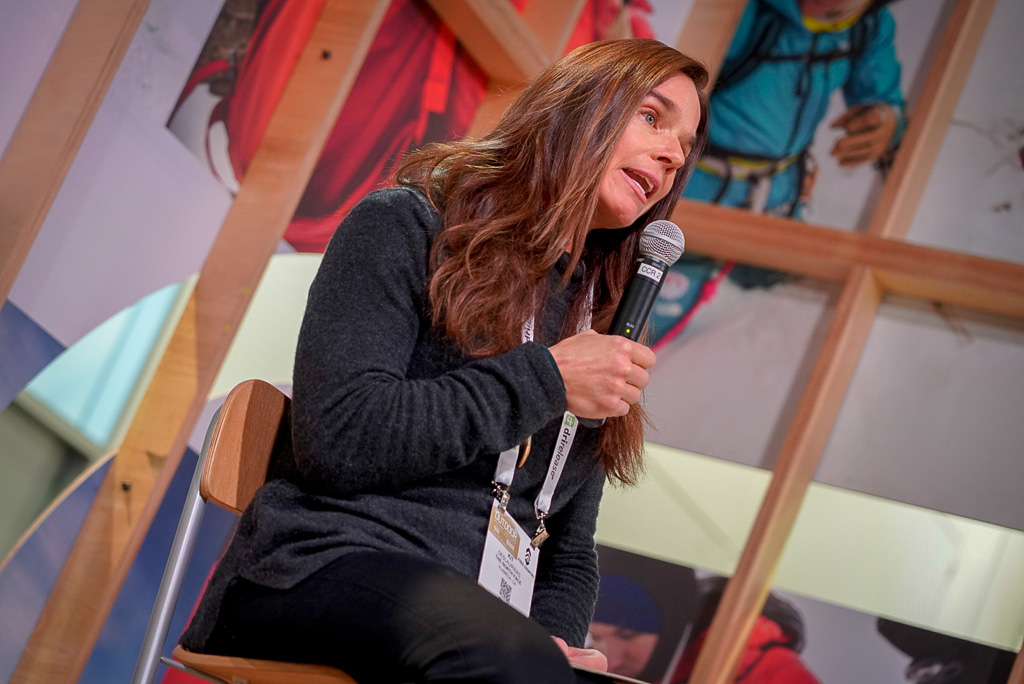
And on the last night of Outdoor Retailer, the Explore Inspired team attended Backcountry Film Festival’s Night Of Stoke.
Apart from a few of the amazing films we watched directly addressing environmental issues and how to reduce your personal carbon footprint as a outdoor athlete, what really stood out were that between the films, some of the biggest names in the outdoor world took to stage to speak on behalf of protecting our public lands.
Conrad Anker, Tommy Caldwell, and Caroline Gleich passionately shared their stories of why they fight for the environment and why it’s time for each and every one of us who finds ourselves in the outdoors to take a stand and use our voice.



The importance of protecting public lands and the environment in general could also be seen in so many new products on showcase at OR. Sustainability has been and continues to be a major priority for brands in the outdoor industry.
Patagonia, perpetually a driving force in pushing industry sustainability practices forward, highlighted the use of post-consumer plastics and other recycled materials in the majority of their Fall 2018 products.
From packs to pants to jackets, Patagonia isn’t just out there protesting, they are practicing what they preach.

Klean Kanteen just launched the Klean Coat™, a brand new standard in durability and environmental safety. The new Klean Coat powder coat finish is available in both gloss and matte and is 4x more durable.
Why does durability matter? Products that last mean less waste in the long run, so Klean Kanteen is designing for a lifetime. Additionally, Klean Coat completely eliminated ingredients from the traditional powder coat formula that adversely affect people and the environment, creating a more sustainable end product for all.
Check out the new nature inspired colors.

Quiksilver teamed up with Swedish ingredient brand We aRe SpinDye® to create a line of apparel products featuring a clean, traceable coloring method designed for long-term awesomeness.
We’re pretty excited about this SpinDye line because the traditional water dying practice can be very harmful to the environment.
“Research cited by the World Bank indicates that nearly 20% of all water pollution world wide is related to the process of dyeing textiles.”
Introducing color earlier in the manufacturing process, without the use of water or toxins, means dramatically reducing water pollution and leaves us with consciously colored product.

Adidas Outdoor was showcasing high-performance sportswear products made from recovered and recycled ocean plastics via their collaboration with Parley.
By turning threat into thread, Adidas and Parley aim to end plastic pollution by eliminating plastic bags, micro beads, and virgin plastics from their supply chain, stop plastic before it entered the oceans, and drive eco-innovation forward.

And it’s not just the big brands rethinking their product lines and creating more sustainable gear.
Smaller startup companies like United By Blue and Parks Project are founded on the principles of conservation, activism, and sustainability, and built their business models around it.
Again, it’s incredible to see that the outdoor industry is leading the way.
We haven’t solved the problem, but we have acknowledged that a problem exists. And we, from the individual to the brand level, are taking action to do what’s right for our planet. To use our voice and our passion to preserve the places we love to play. I’m confident that public policy will follow.
For more of Explore Inspired’s take on Outdoor Retailer, be sure to subscribe and follow along as Ethan, Emily, and I continue to share our stories from the show.

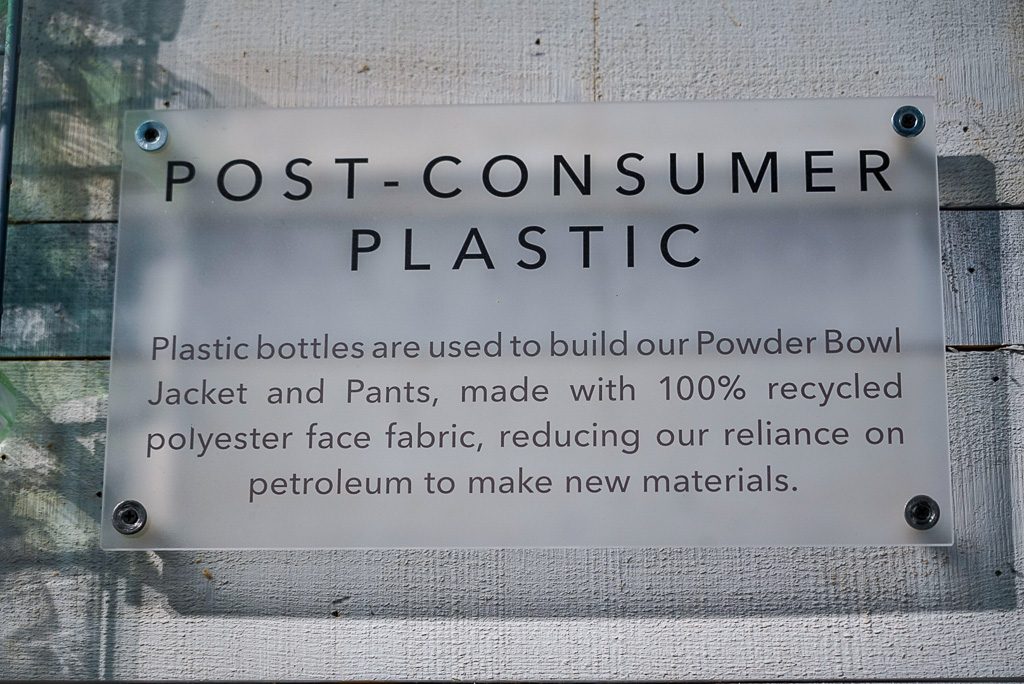

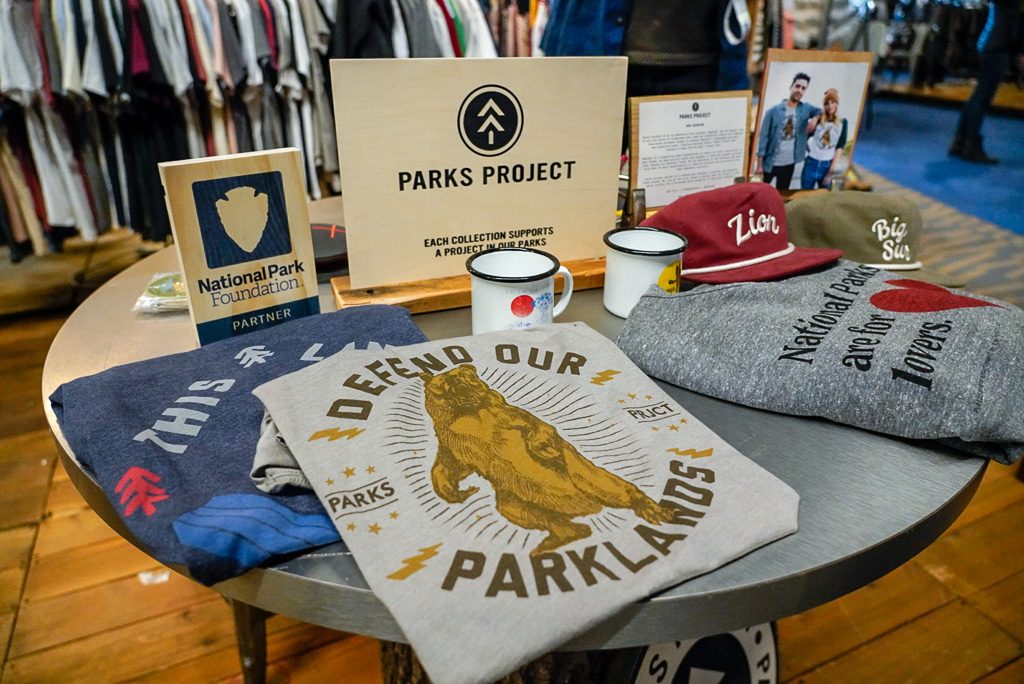
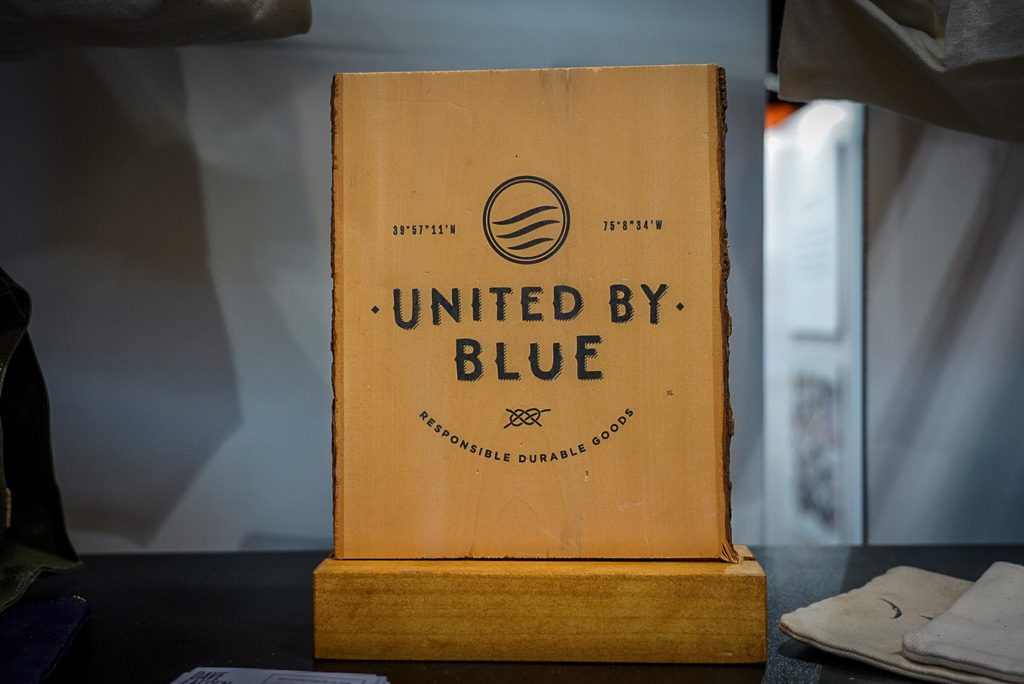

For the past few years, Adidas has collaborated with Parley for the Oceans, an eco-friendly organization that works to protect marine life.